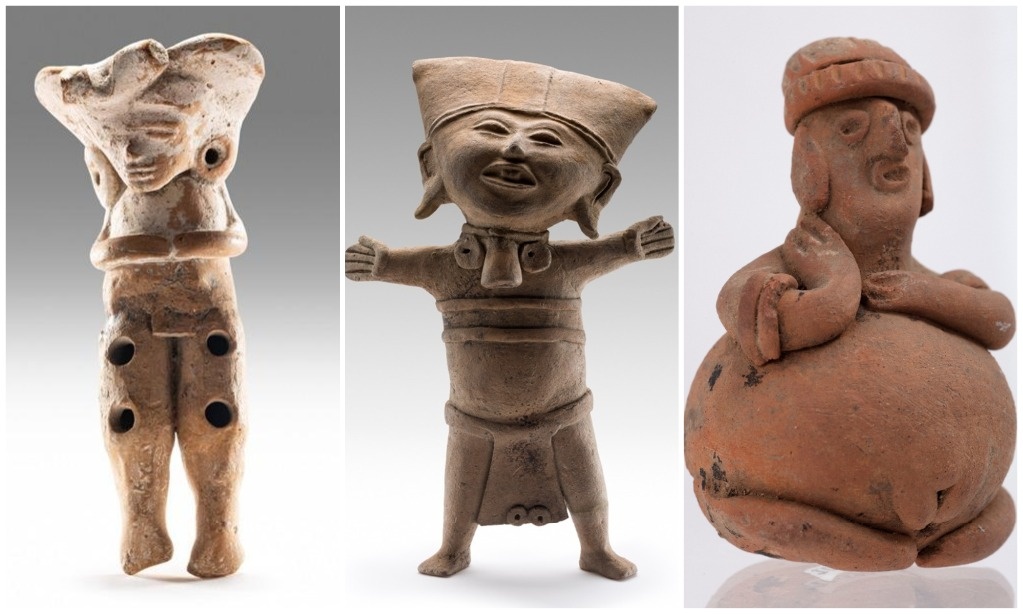Mexico City. One of the greatest mysteries about the lifestyle of pre-Hispanic peoples is their music. For this reason, the exhibition Tlapitzalli: Rites and sounds of ancient Mexicowhich opened its doors yesterday at the Scuderie del Quirinale museum in Rome, Italy, seeks to delve into the aspects of this discipline and its functions in the daily life of the many cultures of our country.
In an interview with The Daythe archaeologist and curator of the exhibition, Frida Montes de Oca, spoke about this new exhibition made up of 163 pieces, the largest number of pre-Hispanic musical instruments to travel to the European continent.
The idea came to me when I was restoring some sound pieces, there I saw a kind of flute that did not look like any instrument I knew, and that led me to look for other artifacts and to propose a team that, after repairing the objects, would investigate how it is heard.
Montes de Oca commented.
The panorama of music with pre-Hispanic instruments is vast. At the National Institute of Anthropology and History (INAH) there are experts who seek to unravel the mysteries related to their role within each ethnic group, their social, religious and class function. This is where the exhibition takes its name, since a tlapitzalli It is a small flute that emits high-pitched sounds.
We are not just putting on an exhibition, but we are offering the discoveries after an investigation that took more than two years. We want to open the way for new archaeologists, archaeomusicologists and other disciplines to enter and explore the ancient musical universe.
the curator assured.
The music of Mesoamerican cultures was very complex; it not only had basic tunes like those used in some shows today, but It must have had a certain metric, which can be deduced from the way in which these pieces were made, and that is something that visitors to this exhibition will be able to enjoy, since we were able to record the sounds of these instruments.
said the archaeologist.
Even from a religious perspective, music was an indispensable part of the daily life of these cultures. Many of these artifacts are dedicated to Quetzalcoatl-Ehécatl, the god of the wind, and there are also others that are related to his twin, Tezcatlipoca.
According to the myth, after touching a snail, which had been pierced with the help of insects, the creator god was able to convince Mictlantecutli, the deity of death, to let him take the bones from the underworld, with which he gave form to humanity.
There is also the myth of Tonatiuh, god of the Sun and owner of musicians whom he jealously guarded. Again it was Quetzalcoatl, in his form of Ehécatl, whom his brother Tezcatlipoca convinced to give him some musicians so that humanity could enjoy their divine melodies.
These tools were so important that there were artisans who dedicated themselves exclusively to creating them. There are flutes originating in Teotihuacan, others from the Mayan cultures and some that were modified to sound similar to an organ.
Many of the artifacts were made from common materials, which allowed for their optimal restoration. “When we had to rehabilitate them, we were afraid that we would modify something and therefore alter the sound, but we understood that we could use almost any material and it would not affect the sound experience.
We examined many of the instruments and found them to be perfectly smooth inside; to have that level of craftsmanship they must have been created by experts. These are not basic sounds at all.
concluded Montes de Oca.
Gonzalo Sánchez, an ethnomusicologist at the INAH, stated in an interview with this newspaper that Mesoamerican people treated music as a representation of the divine breath of life
and they devoted themselves mainly to the elaboration of the huéhuetl (similar to a drum) and the teponaztli, an artifact similar to a wooden xylophone.
Many people wonder what the scale of pre-Hispanic music was, which is very difficult to answer, but what most likely interested them was the variety of atmospheres they created with multiple timbres, sounds and voices.
Sánchez says that when reviewing the stories of the Catholic evangelists during the conquest, they were unable to describe the sounds well, because for them they were dissonant and strange and they did not understand their musical code, they even went so far as to describe them as demonic
so records are scarce.
“The problem is that we only have the tools with which they made music, but nothing to guide us as to their rhythms and tones, so we don’t know how similar the music that has survived to today is to what was heard back then.
We believe that the contemporary melodies of some groups are a bit close, but they are more artistic proposals with many liberties; they are not like those of before because they mix current instruments, although we cannot deny that there is something that was inherited. We are not sure what has come down to us today, therefore it is necessary to analyze more in order to know what it was like in the past.
the expert concluded.
The sample Tlapitzalli: Rites and sounds of ancient Mexico will be open until September 14 at the Scuderie del Quirinale museum in Rome, Italy. The entrance fee is 7 euros.
#musical #objects #ancient #Mexico #display #Rome
– 2024-08-01 17:19:18


